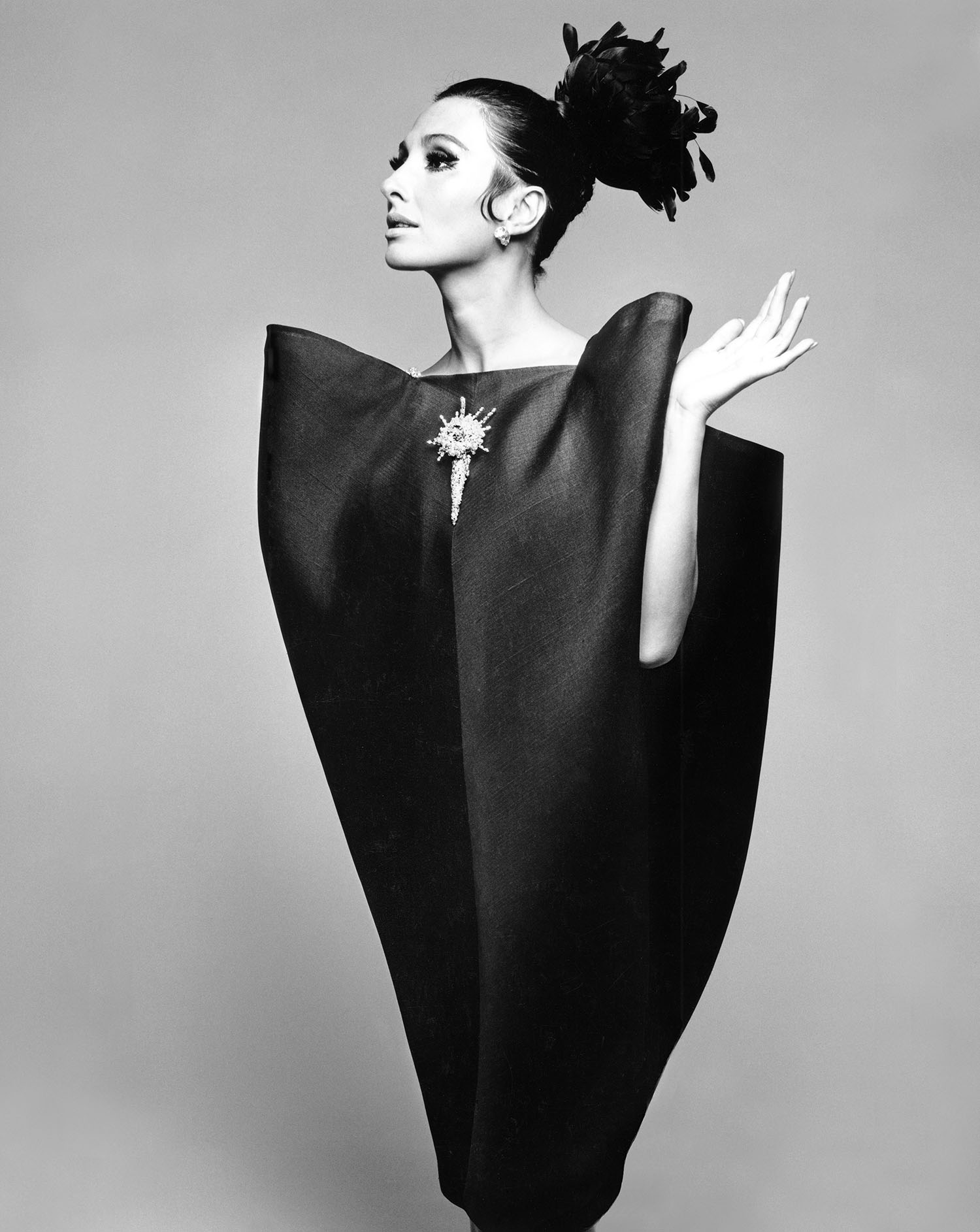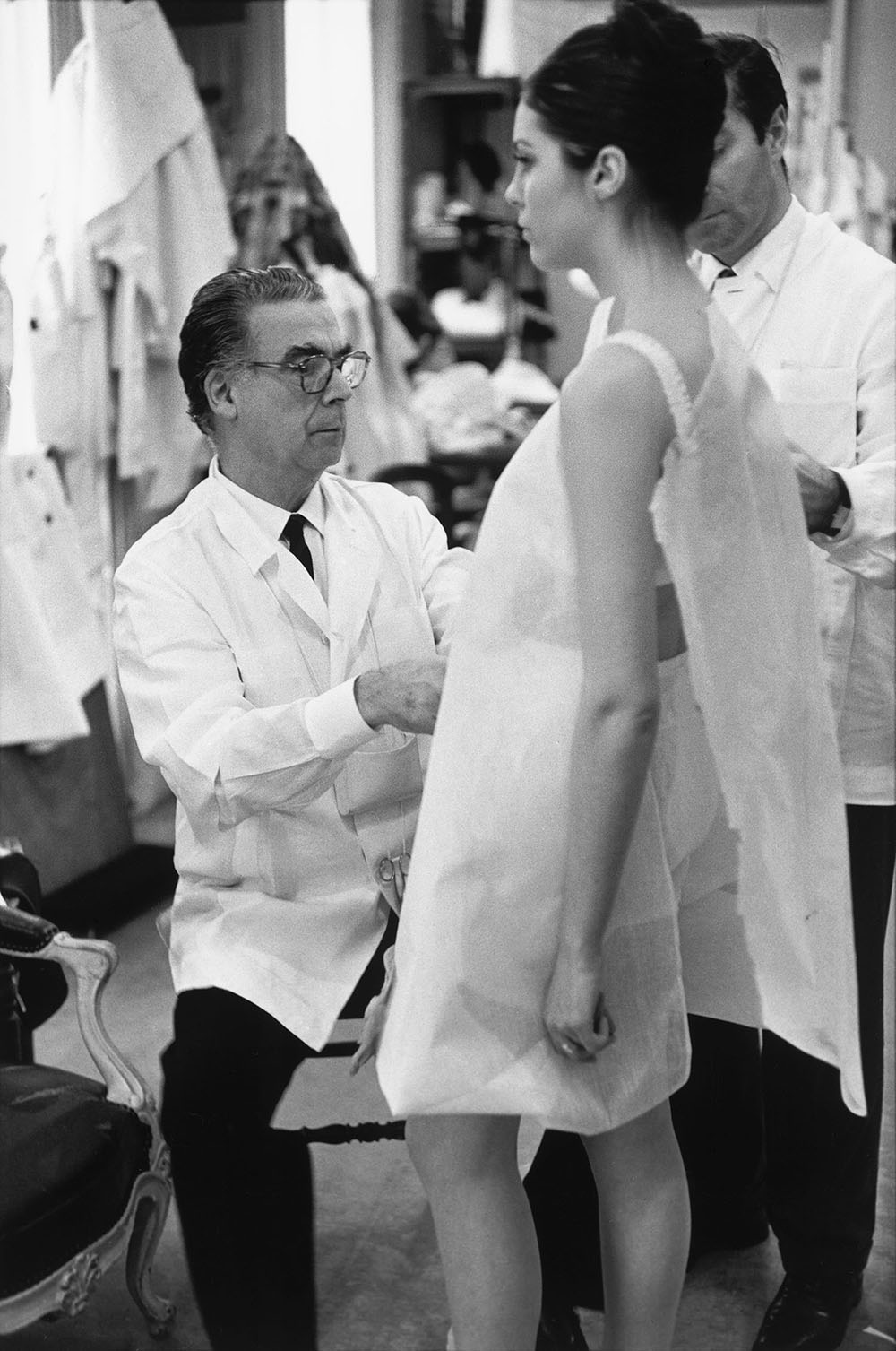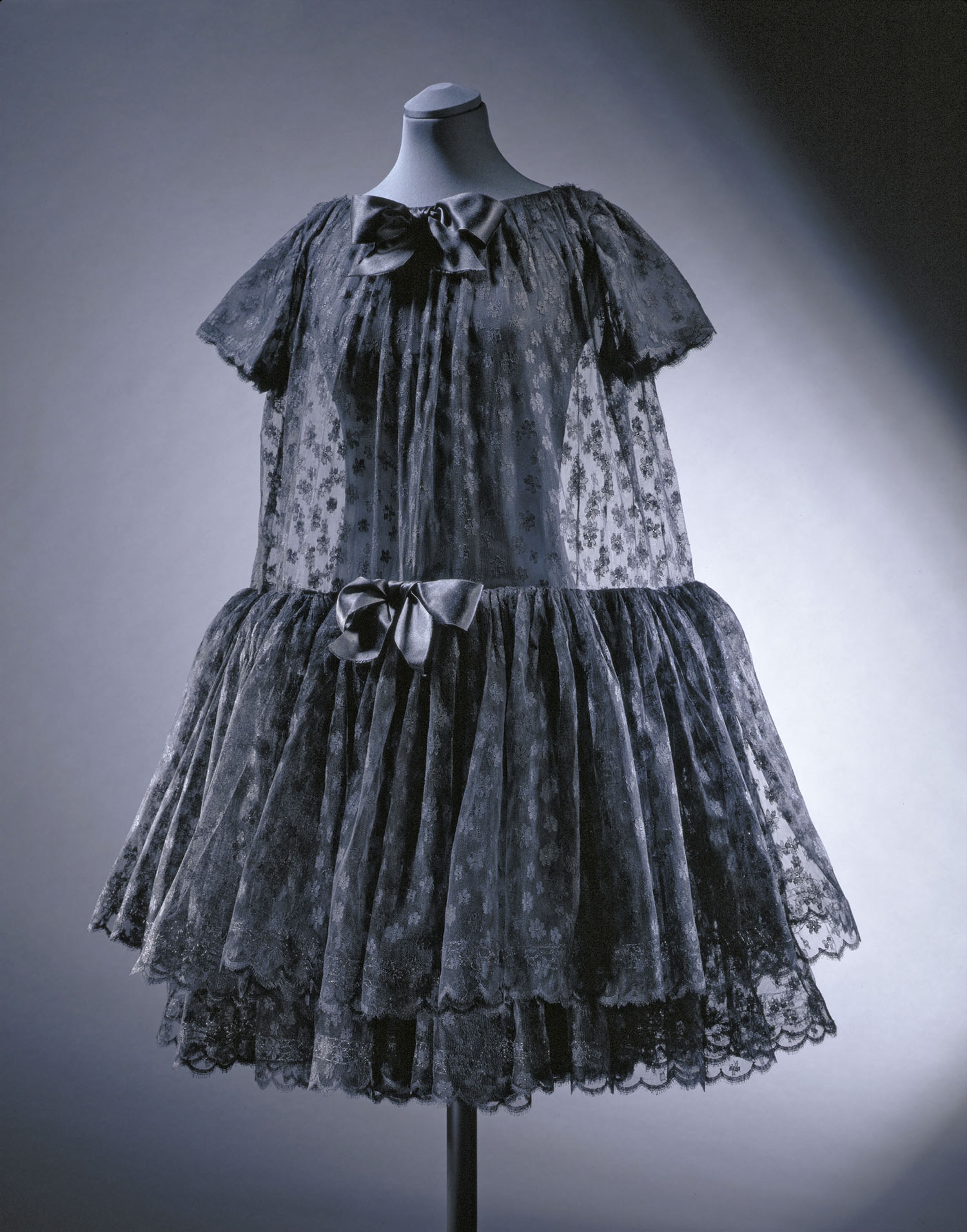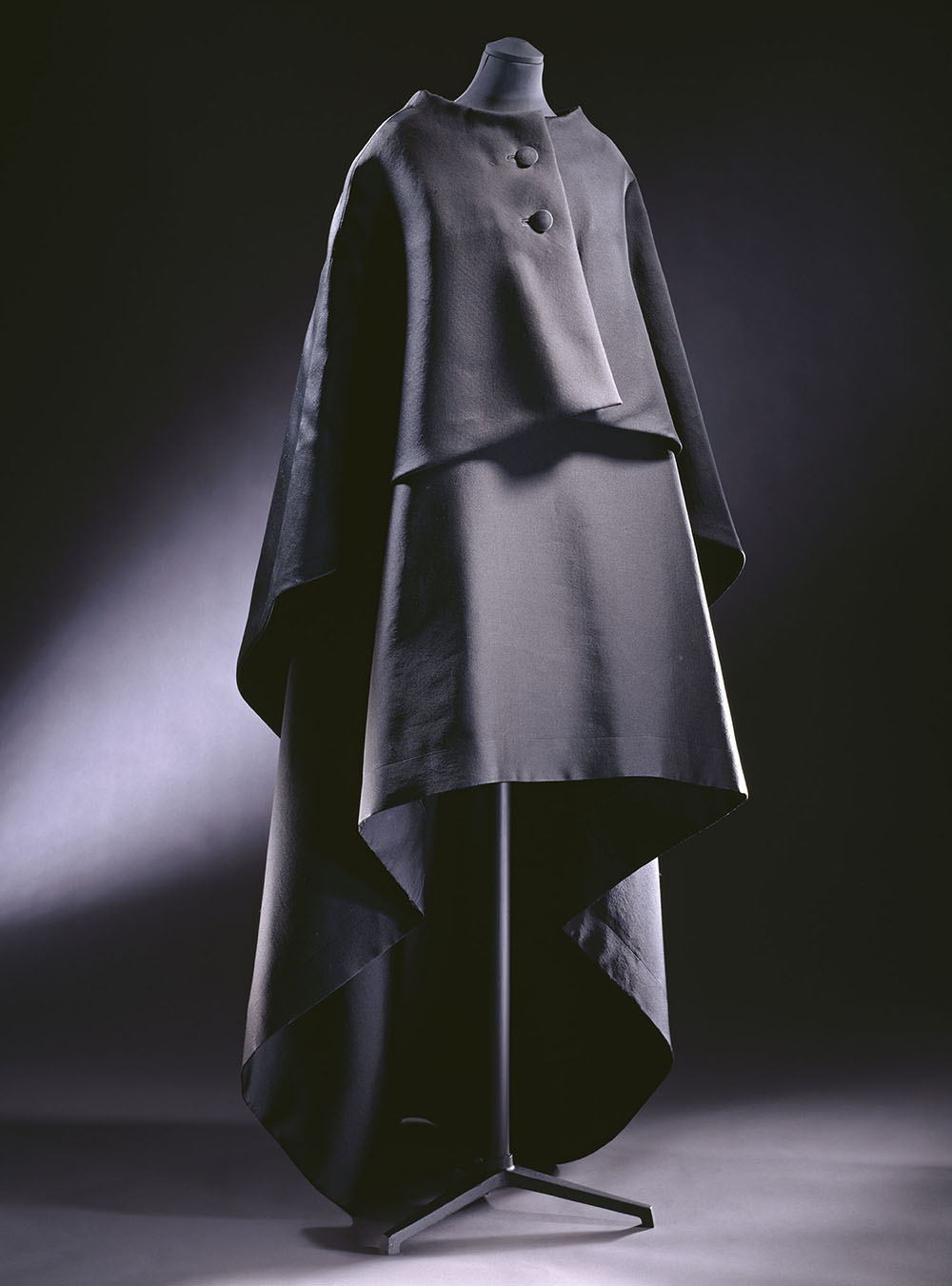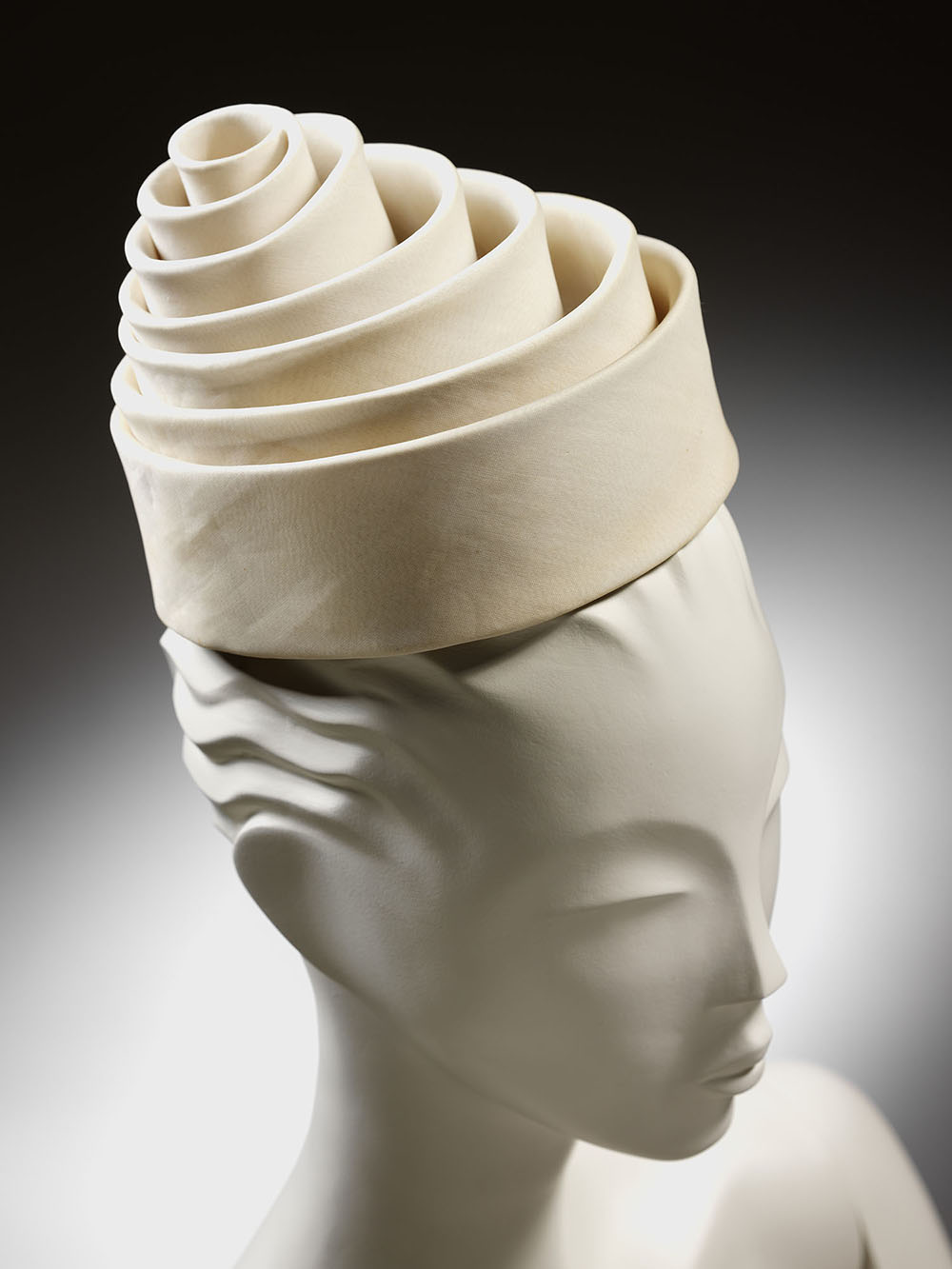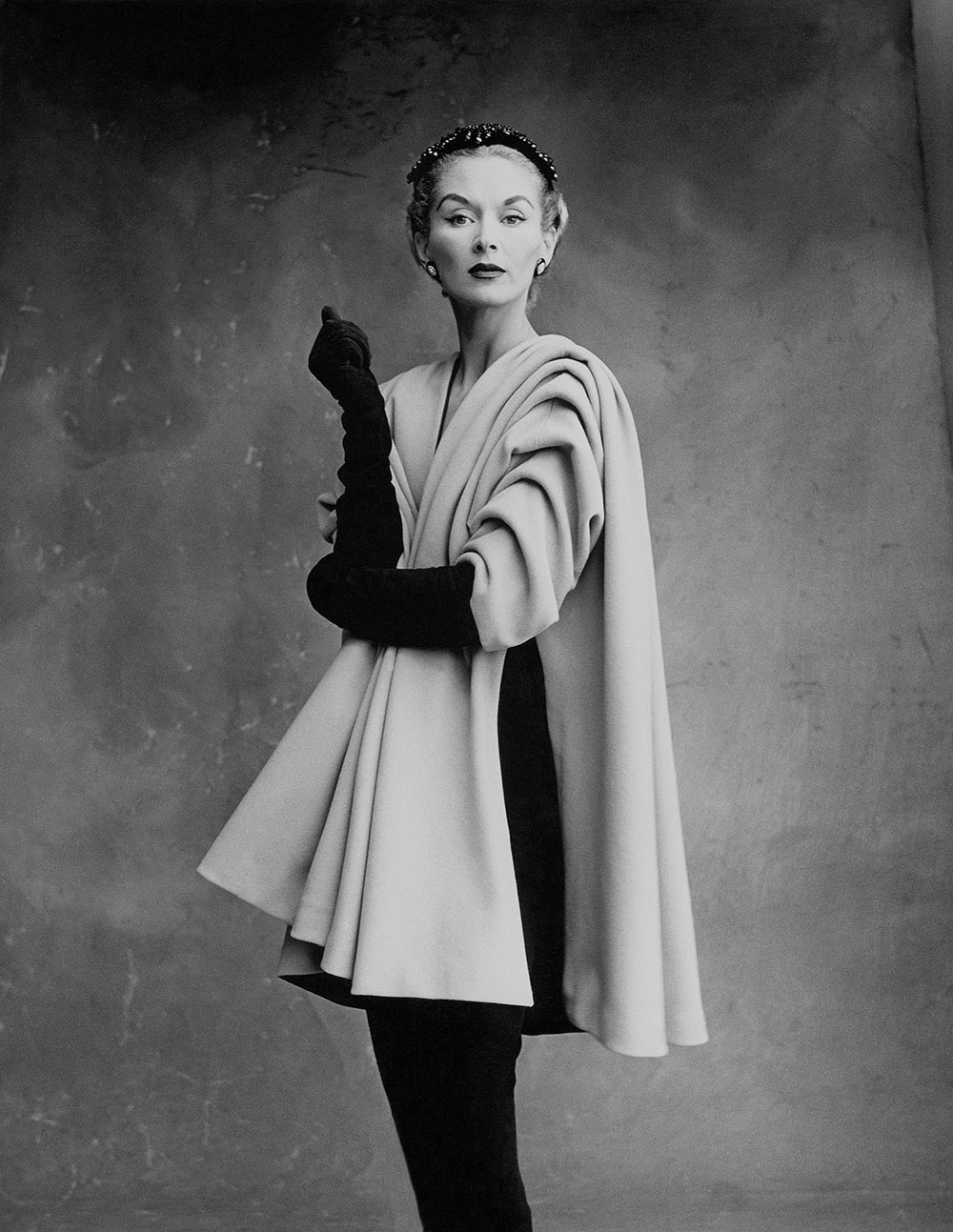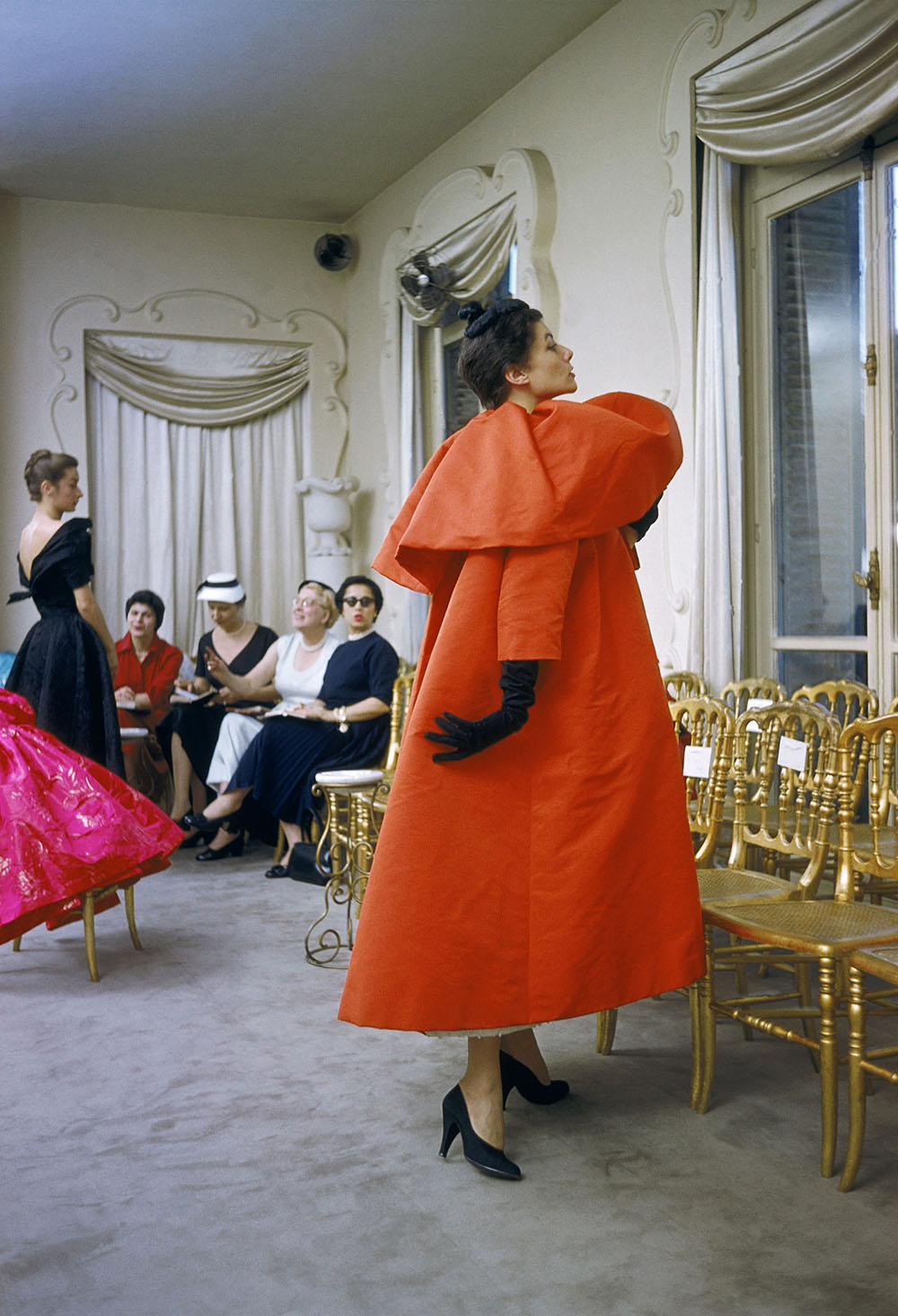Balenciaga: Shaping Fashion ⏤ From Cristóbal Balenciaga to Demna Gvasalia
May 25, 2017 — February 18, 2018
Victoria & Albert Museum
Cromwell Road, Knightsbridge, London UK
Balenciaga: Shaping Fashion, the Victoria & Albert Museum’s latest exhibition, makes infinitely more sense when you consider Cristóbal Balenciaga as an architect, rather than a fashion designer.
The exhibition focuses on the later years of the couturier’s career, in the 1950s and ’60s. A time when arbiters of fashion favored Dior’s ultra-elegant New Look silhouette, Balenciaga and the women who allowed him to dress them were revolutionaries who sought to go beyond mere elegance, and favored experimentation with form. Here, their risk-taking pays off and takes center stage at the exhibition. “Balenciaga went against the grain to revolutionise the female silhouette, creating a more modern, architectural aesthetic that stood away from the body rather than restricting it,” says the exhibition’s curator, Cassie Davies-Strodder.
Cristóbal Balenciaga at work, Paris, 1968. Photograph Henri Cartier-Bresson © Henri Cartier-Bresson, Magnum Photos
'Baby doll' cocktail dress, crêpe de chine, lace and satin, Cristóbal Balenciaga, Paris, 1958 © Victoria and Albert Museum, London
‘Sculptural’ is a word that often gets thrown around when referring to Balenciaga, and for good reason. Fashion students, when they are taught to sketch, are taught to depict the outside. They draw what we will eventually see: they place pockets, zips, necklines and so forth. Balenciaga, born in the Basque country and in an era when the wealthy would commission their seamstresses, grew up working alongside his mother, who was one of those seamstresses, and trained as a tailor. His understanding of clothing and the way all its intricacies work—how the fabrics, the seams, the stitches come together—conveys a technical prowess more often seen in an architect’s master plan. To wit, Davies-Strodder has organized X-rays of the clothing to be displayed next to each piece. The scans reveal weights sewn into a hem to ensure the perfect drape, or an internal ribbon that invisibly gathers and shapes the fabric on the outside; pieces, in other words, that have been meticulously constructed, and that convey a master’s sense of precision and deliberation.
Bolero jacket, EISA, Spain, 1947 © Museo Cristóbal Balenciaga
Dovima with Sacha, cloche and suit by Balenciaga, Café des Deux Magots, Paris, 1955. Photograph by Richard Avedon © The Richard Avedon Foundation
The exhibition is nominally split into three main sections: ‘Front of House’, ‘Workrooms’ and ‘Legacy’ in the two-storey rotunda the V&A reserves for its fashion exhibitions; the top floor explores his influence on designers ranging from André Courrèges to Phoebe Philo and J.W. Anderson, while the ground floor displays ensembles created for Ava Gardner, Gloria Guinness and Mona von Bismark, the latter who went on to commission garden shorts, as well as ball gowns, from the designer. Digitized and animated clothing patterns of three of the pieces, drawn by pattern-cutting students at LCF, round out the exhibition, literally.
Elise Daniels with street performers, suit by Balenciaga, Le Marais, Paris, 1948. Photograph by Richard Avedon © The Richard Avedon Foundation
Evening dress, Cristóbal Balenciaga, Paris, 1962. Photograph by Cecil Beaton, 1971 © Cecil Beaton Studio Archive at Sotheby's
Evening gown and cape, ziberline, Cristóbal Balenciaga, Paris, 1967 © Victoria and Albert Museum, London
Spiral hat, silk, Balenciaga for Eisa, Spain, 1962 © Victoria and Albert Museum, London
Lisa Fonssagrives-Penn wearing coat by Cristóbal Balenciaga, Paris, 1950. Photograph by Irving Penn © Condé Nast, Irving Penn Foundation
The house as we know it today isn’t a direct descendant of Balenciaga’s legacy; yet whether it’s been headed by Nicolas Ghesquière, Alexander Wang, or Demna Gvasalia, it has maintained its reputation for clothes that are at once innovative and elegant at the same time. Thanks to V&A’s masterful work, it’s clear exactly where this DNA comes from.
Head image: Alberta Tiburzi in 'envelope' dress by Cristóbal Balenciaga, Harper's Bazaar, June 1967 © Hiro 1967
Model wearing Balenciaga orange coat as I. Magnin buyers inspect a dinner outfit in the background, Paris, France, 1954 © Mark Shaw

